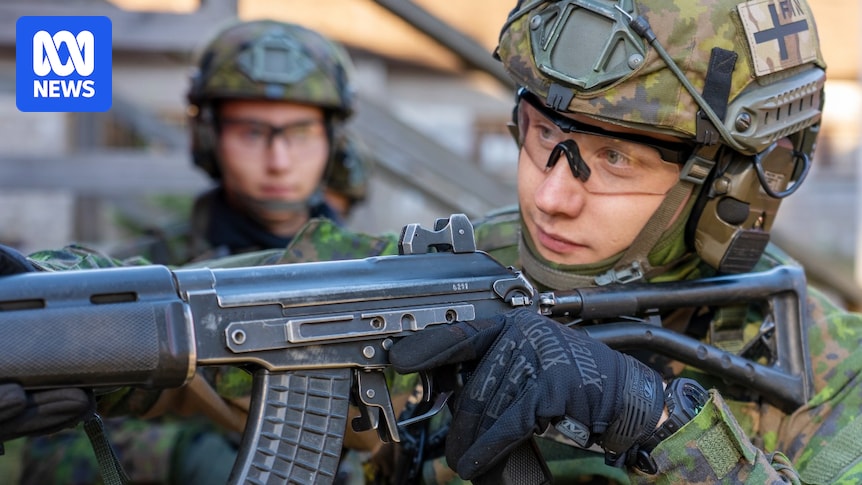
Inside the Nordic nation that’s spent decades preparing for another Russian invasion, Finland’s capital, Helsinki, offers a unique glimpse into the country’s defense strategy. Beneath the bustling streets lies an extensive network of 5,500 bunkers and tunnels, capable of sheltering 900,000 people—more than the city’s population of around 680,000. These subterranean spaces, while currently serving as sports facilities and cafes, are primarily designed for wartime use.
“This is the backbone of our safety system,” said Tomi Rask, a local official from the Helsinki City Rescue Department. “It is intended for war-time use, but it has a dual purpose.” With Finland sharing a 1,340-kilometer border with Russia, concerns about potential aggression from its eastern neighbor are ever-present.
Historical Context and Modern Concerns
The threat of conflict with Russia is not new to Finland. In 1939, the Soviet Union launched an attack known as the “Winter War,” forcing Finland to cede nearly 10% of its territory despite retaining independence. This historical context fuels current fears, especially as Russia’s invasion of Ukraine continues.
Finland’s Foreign Minister, Elina Valtonen, emphasized the importance of preparedness. “We were luckily able to fend [the Soviets] off, but at the same time, what has remained is this sort of cautiousness that we are strongly aware that Russia might be a threat again at some point in the future,” she said.
“For a small nation, preparedness is a matter of existence. Finland has learned it the hard way.”
Defense Strategies: Bunkers and Military Service
In addition to its extensive bunker system, Finland relies on mandatory military service as a key component of its defense strategy. All male citizens between the ages of 18 and 60 are required to undergo military or civil service, while women may enlist voluntarily. This policy has resulted in a reserve force of approximately 900,000 individuals, about 20% of the nation’s population.
At a military base on Santahamina island, new conscripts undergo rigorous training. For many young Finns, this service is seen as a rite of passage. “We need to be ready to defend ourselves and our land,” said 21-year-old Vincent Holmström. Julius Vayrynen, 20, echoed this sentiment, expressing his willingness to fight for his country.
A recent poll found that 78% of Finns believe they should take up arms to defend themselves if attacked, even if the outcome seems uncertain.
Economic and Social Impacts of Border Closures
Finland’s geopolitical stance shifted significantly after Russia’s invasion of Ukraine in 2022. The country joined NATO and began constructing a 200-kilometer fence along its Russian border. As a result, land crossings have been closed indefinitely, impacting border communities economically.
In Imatra, a Finnish town near the Russian border, the absence of Russian tourists has led to economic downturns. Mayor Matius Hilden noted the quiet city center and the closure of numerous businesses. Tiina Kärkäs-Sund, a local shop owner, lamented the loss of customers but supported the border closure, stating, “Russians have to take the responsibility of what they have done.”
Military Developments and Regional Tensions
Recent military activities by Russia have heightened tensions in the region. In September, Russian fighter jets violated Estonian airspace, prompting NATO to condemn the act as “reckless behavior.” Military analyst Emil Kastahelmi highlighted Russia’s expansion of military assets near NATO borders, including Finland.
Satellite imagery shows significant construction at Russian bases near Finland, suggesting a potential increase in military presence. “There’s no acute threat at the moment,” Kastahelmi noted, “but in the long term, Russia is an aggressive dictatorship which attacks and threatens its neighbors.”
“We simply do not know what kind of thinking there is on the Kremlin side, what their next steps are, how far they are willing to actually go, and what they are willing to risk in order to expand their influence.”
Back in Helsinki’s bunkers, residents hope the facilities’ leisure functions won’t need to be converted for war. “By legislation, we have 72 hours to convert all the shelters to war-time use,” Rask explained. “But we have been practicing, and we can convert this in somewhere from six to eight hours.”
While Finland remains vigilant, Rask offers a simple perspective on the persistent threat from Russia: “It has always been there and it will always be there.” Yet, he reassures, “Finland has always been here and we will always be here too.”







